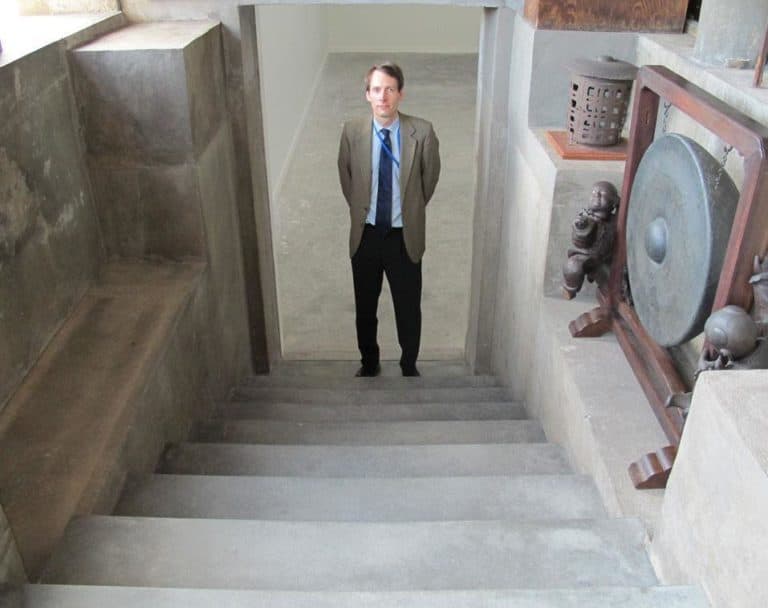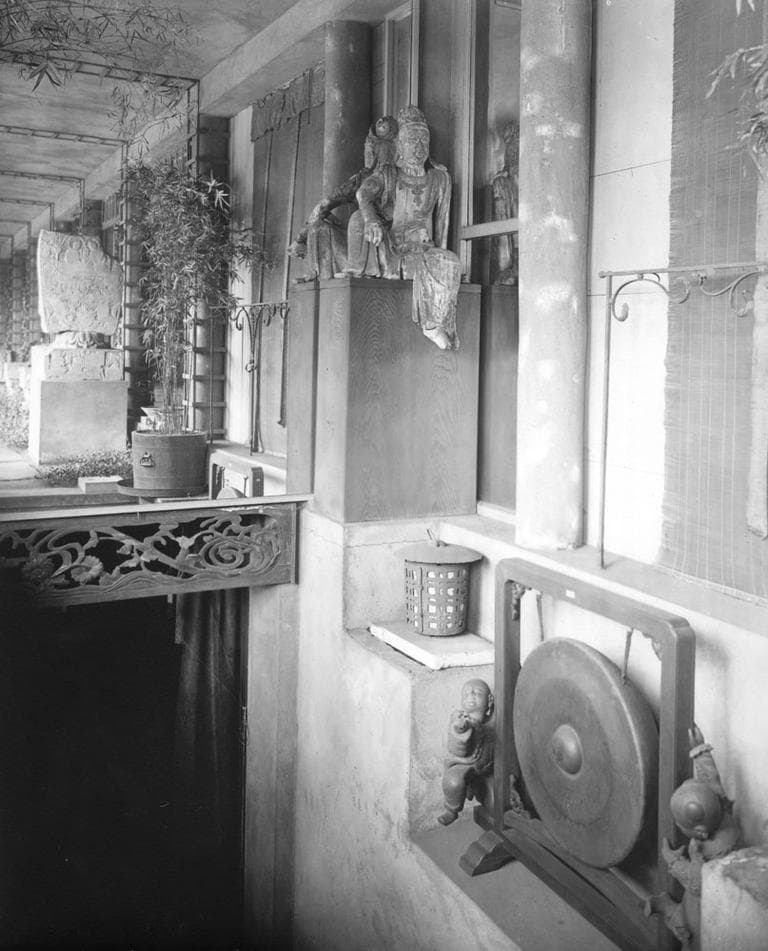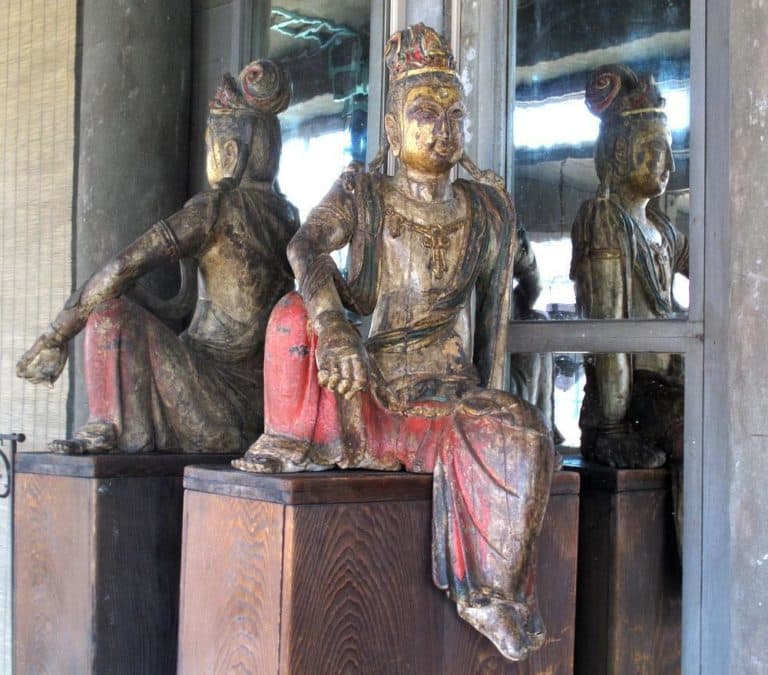Advertisement
Time-Shifts And Discoveries At The Gardner Museum
ResumeThe new wing at the Isabella Stewart Gardner Museum opens next week, and was created to carry the institution into the future. But Gardner's historic Venetian palace has been experiencing something of a "time shift" back to the way things used to be.
[sidebar title="Before & After: The Isabella Stewart Gardner Museum" width="250" align="right"] See photos of the Tapestry Room in 1926 and 2012. [/sidebar]
Think Indiana Jones and the "Raiders of the Lost Ark." It’s not quite as action-packed as the movie, but an exciting sense of discovery has overtaken the Gardner museum. It’s being fueled by troves of unseen artifacts and hidden stairways leading to subterranean chambers.
Curator Oliver Tostmann leads me down steps that descend from the Loggia, a porch-like space on the palace’s ground floor.
“It’s a fairly large room,” he says, “and it always served Isabella Gardner — from the moment when she created it in 1914 — as a kind of personal recreation room."
In Mrs. Gardner’s day this private meditation room was filled with Buddhist statues and sacred objects. But Tostmann explains how the Board of Trustees sold most of them in 1971 because they weren’t seen as part of her public collection.
“I’m optimistic, I hope that one day in the future we will get them back and we will be able to recreate — probably not 100 percent — but maybe close to the original splendor of this room,” he says. “But the beauty is at least we can recreate the entrance to this room fully, so that’s something the visitor to the museum hasn’t seen for the last 37 years.”

Why? Because this room, and its stone staircase, were covered up to accommodate the restaurant and gift shop. When Mrs. Gardner designed and built her intimate museum more than a century ago, she installed thousands of pieces of artwork with extreme care and precision. But over time some things were shifted to make room for visitors. Now, with the new wing, space has been freed up in the historic structure, allowing for a building-wide reclamation.
“And it’s just extraordinary,” museum director Anne Hawley says enthusiastically in the Tapestry Room upstairs. “You see as you step in, all the tapestries are just softly washed with light.”
This room was a favorite of Mrs. Gardner’s, according to Hawley, but it also provided the rationale for building the new wing. When planning began, trustees and staff analyzed the hall’s condition, and deemed it critical to arrest the stress being placed on the 4,000-square-foot space and its artwork. Since the 1970s the Tapestry Room has been a busy concert and lecture space, with a lot of visitors going in and out.
“It was a real ‘ah-ha’ moment in the planning, and I think a lot of us were pretty overwhelmed with that information because it meant that either we had to discontinue the music program and our public lectures, or we would have to figure out how to do it in an addition," Hawley said.

Despite protests from the public and preservationists, that “ah-ha” moment helped museum officials convince the Supreme Judicial Court of Massachusetts an addition was necessary. It’s referred to as an “extension and preservation project.” Now concerts will be held in the new building — and, after a year-long restoration, the Tapestry Room looks like it did in 1927.
But Hawley says acts of conservation in an aging museum are constant.
That’s where the conservators come in. Like a SWAT team wearing white gloves, they race against time to maintain the integrity of more than 2,500 works, including paintings, sculptures, textiles and decorative arts, that make up Gardner’s world-class collection.
Gianfranco Pocobene, head of conservation, says every object has its own unique story, and needs, which can be daunting.
“Because these materials and objects are so rare, you know it can make you very humble with what you’re working with and respect for what the artist made,” he said.
And with respect for Mrs. Gardner’s spirit. To help Pocobene and his peers stay on top of things, the new wing also features a spacious new conservation lab. He shows me around the digital imaging station and opens a large fume hood.

“It always has negative pressure — you can feel that it’s always pulling air,” Pocobene demonstrated, saying it protects he and his peers from the toxic chemicals they often use during the process. A plaster piece made by artist John Singer Sargent lay in front of us, waiting to be cleaned and repaired.
Across the hall a safe room houses what could be seen as an object conservator's secret weapon: a laser. Holly Salmon uses it on the museum’s sculptures, which sounds damaging, but it’s not.
“A fun way of describing it is it’s also used to remove tattoos, and so in the same way that it doesn’t damage your skin it doesn’t damage the marble sculptures. So it is a really great tool,” Salmon said.
And it will be put to good use in the coming months, she said, as she wields the laser’s hand piece that looks kind of like a gun.
“It is a little bit like being in 'Star Wars'," she laughed, “and it’s very satisfying and great!”
But not quite as satisfying as looking around the Tapestry Room, and the rest of Isabella Stewart Gardner's palace, at the objects that have been brought back to life here, just in time for the museum’s grand reopening next week.
This program aired on January 13, 2012.
